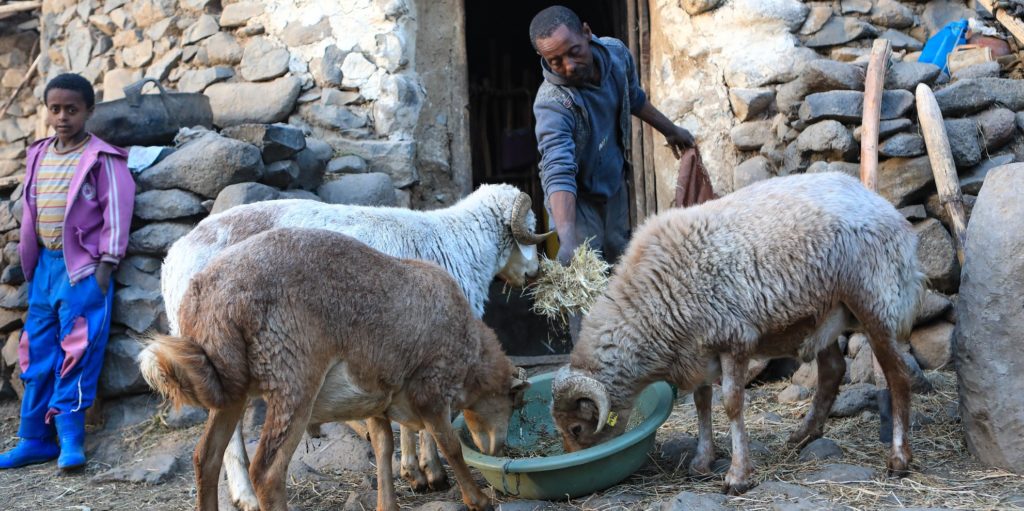Most of the infectious diseases in humans originate from the animal kingdom. They are called zoonoses, and more than 70% of the emerging infectious diseases, new diseases or diseases moving to new geographic areas or populations, in humans belong to this category. Some of the zoonotic diseases are emerging, whereas others are endemic, meaning that they are regularly found in certain populations.
Over the last decades, we have experienced the emergence of several devastating diseases, and the most recent one turned into a pandemic. Influenza type A comes from wild birds, while hemorrhagic fevers like Ebola in Africa originate from bats, and so does the very fatal Nipha virus in Asia. Corona viruses causing SARS or COVID-19 have bats as their origin too.
Sometimes these viruses have “inter-mediate” hosts, serving as a bridge between the, often asymptotic, reservoir-species and susceptible humans. The intermediate hosts could be livestock kept under poor biosecurity conditions like poultry or pigs, especially in case of influenza type A, but more often other wild animals, like for Ebola and the corona viruses.
The latter is currently intensively discussed. The handling and consumption of the so-called bushmeat (wildlife) played a key role in the transmission of the Ebola virus from the wild to humans. In high-income countries this practice is often criticized, mainly from a conservation biology viewpoint.
However, in a setting where people don’t have adequate access to high-value proteins, wildlife is an important source of nutritious food. So, there are nuances regarding bush-meat hunting and eating. Furthermore, just to compare, the annual harvest of moose in Sweden amounts to some 80 000 killed animals and the population is not at risk. So, when wisely managed, meat from wildlife may serve as a sustainable source of nutritious food.
But the balancing is different when it comes to selling live or dead wild animals for gourmet or traditional medicine purposes at the wet markets in China or in other countries. It is very hard to justify the zoonotic risk of selling dead or live bats, civet cats or pangolins on these markets by claiming that they play a role in fulfilling our basic needs. There is strong molecular evidence that the two latter species sold on such markets served as inter-mediate hosts for SARS and COVID-19, respectively.
Endemic zoonoses are mostly transmitted from livestock to humans and are most commonly found in low-income countries. Classical examples are bovine tuberculosis and brucellosis causing severe infections in humans. It is estimated that that zoonotic diseases contribute to 10 % of the DALYs (Disability Adjusted Life Years) in low-income countries, but only 0.02% in high-income countries (note, this is the pre-COVID-19 figure).
Low-income countries are disproportionally affected for a variety of reasons: Zoonoses that are controlled or eradicated in high-income countries are circulating in the livestock population, farmers often live in closer contact with their livestock and sometimes under poor sanitary conditions. Additionally, food safety measures can be insufficient too. Many people keep livestock in cities and this practice expands the interface of interaction between animals and dense human populations, increasing the risk of transmission of infections to humans.
There are no quick fixes to mitigate the risk factors for transmission of the endemic zoonoses. Improved biosecurity and vaccination programs may, like for many other livestock infectious diseases, be an option but require resources and good governance. Poor sanitation is often connected to poverty, like the reason why people have their housing close to animals. However, farmers may be trained to handle sick animals with caution.
Urban farming is banned in many large cities in low-income countries but there is often a large informal sector. This is a compliance issue, but both farmers and consumers may take several food safety precautions. These include: only consuming boiled (pasteurized) milk to avoid getting infected by diseases like brucellosis and tuberculosis, avoid mixing raw meat with cooked meet or fresh vegetables.
Thus, there are several ways to prevent spread of zoonoses, some measures should be taken on the ground and some on the governance level with financial investments as well as the development of skills and changed practices.
The emergence and spread of zoonotic diseases, like COVID-19, starkly demonstrates that our health is connected with the health of animals and the environment. So, when fighting the burden of disease in low-income countries and public health challenges in general, there are good reasons to apply the One Health approach, where human, livestock and environmental (including wildlife) health are considered together. This will not only directly reduce health risks for humans, but also improve animal health and increase livestock productivity thereby contributing to better livelihoods and nutrition.
Written by Ulf Magnusson, Professor of Animal Reproduction, Department of Clinical Sciences at the Swedish University of Agricultural Sciences (SLU).
